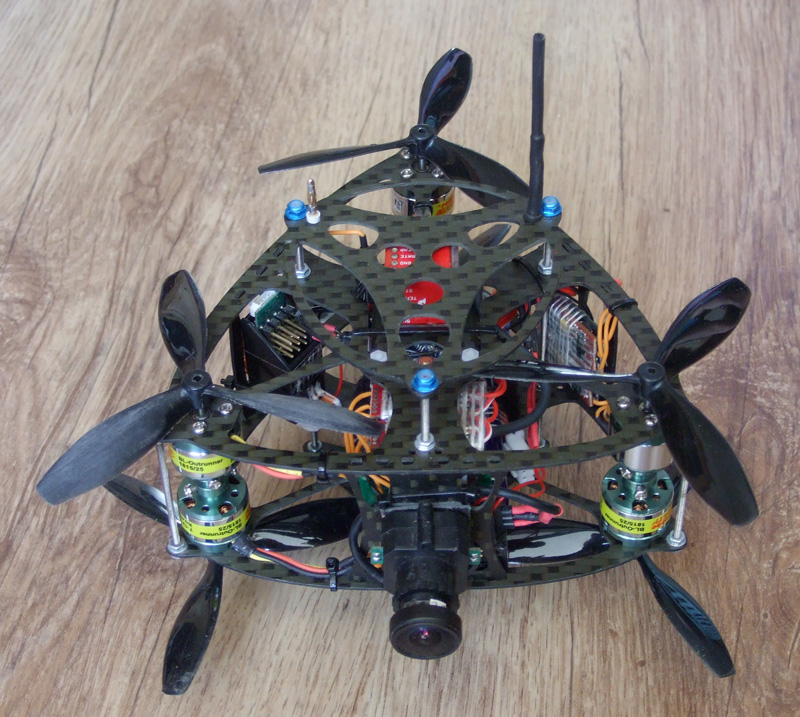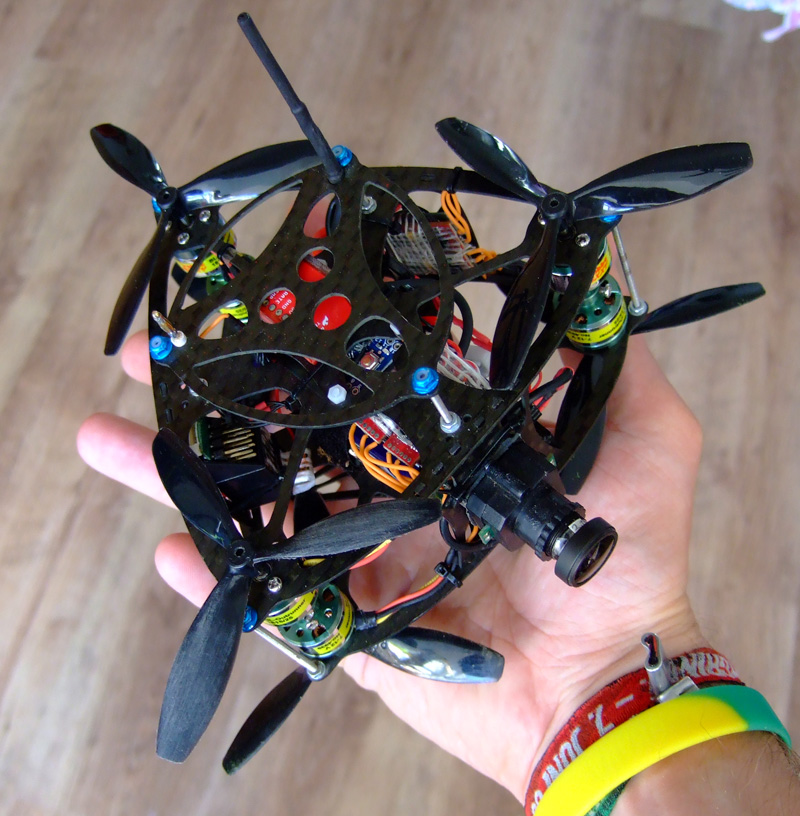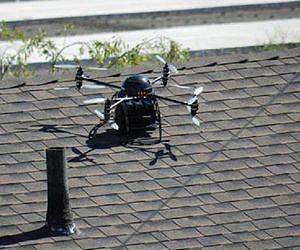There's 1 big demo reel, containing highlights from the last 4 years.
Not nearly everything, but we got tired of editing.
In the process of researching the demo reel, found this oldie but goodie from 2007.
It was a 2 way data connection, using the
audio channel on a 2.4Ghz TV transmitter + a 72Mhz RC transmitter. We
already had this gear & didn't want to invest $80 in radio modems, so
spent most of that year on this problem. After making it work perfectly,
inside, it completely failed outside, so we spent the $80 anyways.
MARCY 1 FLIGHTS
A very short break in the weather allowed us to make some progress on Marcy 1 airframes.
2 years of studying monocopters has shown that no-one really knows how
they work. Our most stable design spins at 300rpm, a wicked low speed,
has a huge coning angle, has wing pressure at the CG, & has a winglet.
Shrink the wing diameter & it gets unstable. Reduce the RPM & it gets
unstable.
Decent one. 12 minutes of flight time on a dead battery. Balanced
wing pressure. CG in the lighest area. Horrible coning angle.
Most stable configuration ever. Flight time of 11 minutes on a dead battery. Very low RPM & very little oscillation. The winglet is the key.
When this comes floating down from the direction of your aircraft, it's
going to be one of those days. Definitely pushing the limits of
structural margins. She didn't get very far without it. Surprised how
important it is for stability.
Wind was howling for this one. Got a lot of oscillation when applying
cyclic, but it settled after releasing cyclic. Needs to be repaired
after every landing. Coning angle may indeed have a limit, with
increased lift only being available from the inner diameter.
Weather closed off again, by the time this was built. Got a few flights in, between wind gusts. It didn't have any more landing damage & it seemed to be the most stable. RPM was down to the 250 range. Definitely getting to where weight is above optimum.
SPECULATION
Tying 3 monocopters together to make a super long duration VTOL has intrigued us. It would need 3 batteries. Motors that size are super expensive. 1 radio beacon would contain throttle for the 3
rotors, but they'd have to take turns broadcasting return packets with telemetry.
Then there's the issue of torque with 3 monocopters. They don't make
enough torque to turn a quad rotor. You'd need a big, heavy servo.
Also looked at coanda effect copters for Marcy 2.
Looking over coanda effect copters, people are obviously more interested
in the flying saucer shape than the efficiency. We've been wondering if
3 couldn't be used to make a tri rotor more efficient.
Coanda saucers never made sense, because they use airflow from 1 surface
of the aircraft to pull up another surface, like a fishing pole pulling
itself up. They deflect air horizontally & then deflect it vertically
again. The extra lift is supposed to come from the propeller exhaust
inducing a flow in the ambient air.
They also need 1 more servo than a lift fan, to control yaw.



